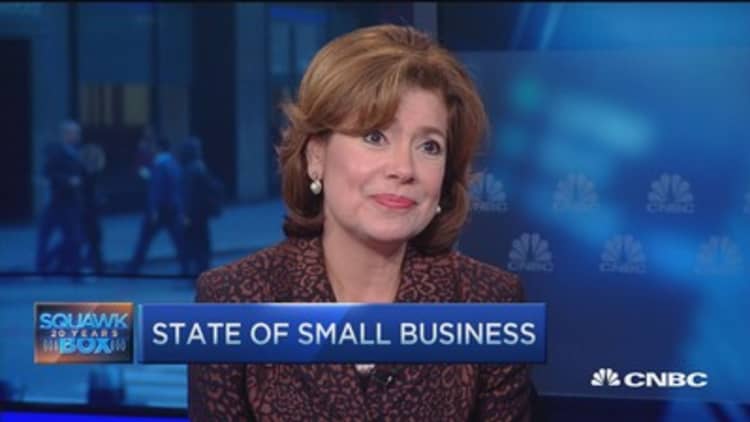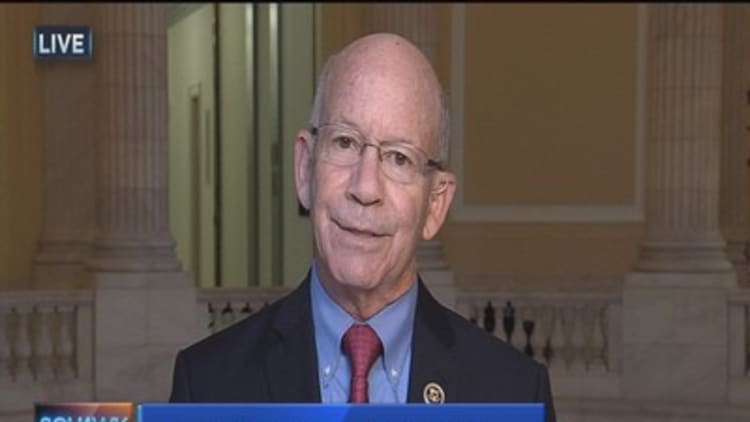
Governments released the full text of the Trans-Pacific Partnership earlier this month, and experts are beginning to weigh in on the divisive trade pact that seeks to connect countries representing more than 40 percent of global GDP.
Industry groups and unions have voiced strident opposition to the TPP — frequently called the "21st century trade agreement" — and U.S. presidential candidates in both parties have bashed the agreement. Republican front-runner Donald Trump, for instance, has called the trade pact "an attack on America's business," but experts say many businesses will likely benefit from the deal.
"For some sectors it's a good agreement, for others I have concerns," said Tim Brightbill, a partner at Wiley Rein specializing in international trade law and policy.
Brightbill, who also serves as vice chair of the U.S. government-administrated Industry Trade Advisory Committee on Services and Finance Industries, pointed to the tech and telecommunications sectors as likely beneficiaries of the deal.
The "electronic commerce" section of the TPP text, in particular, lays out explicit agreements that will remove barriers to entry for Silicon Valley companies and others. These include clauses on reasonably comprehensive consumer and personal identification protection, and an agreement that a country cannot force companies to use computing facilities within its borders.
For many tech firms, the most attractive piece of the deal may be that it says that "No Party shall require the transfer of, or access to, source code of software owned by a person of another Party, as a condition for the import, distribution, sale or use of such software, or of products containing such software, in its territory."
In other words, companies will never be forced to hand over their code — a topic currently sparking fears in Silicon Valley as China (not a TPP member) seeks a peek at software's code before it can be used in key sectors. Any fears that TPP countries could enact similar mandates would become moot if the deal were approved, likely spurring increased entrance into those markets.
Read More China may try to force US tech firms to give up code
Another apparent winner from the deal is U.S. agriculture. Derek Scissors, a scholar for the American Enterprise Institute, wrote in a Thursday analysis that "American agriculture producers will be understandably happy" by the increased access for their products abroad. This includes soybeans and many other foodstuffs, but, Scissors noted, some barriers still remain.
On the other side of the equation are U.S. manufacturers — "I'm having a much harder time seeing how TPP helps them increase exports or compete around the world," Brightbill reflected.
One element of this is the lack of any real provision about currency manipulation, experts and industry groups have said, as the relative strength of the dollar accounts for much of U.S. manufacturing's woes. There remains considerable debate, however, on whether manipulation is even a major problem with which Washington should be grappling.

But another, less discussed, piece of the puzzle is the rules of origin. These rules dictate what percentage of a good's components need to be manufactured in TPP member countries for those products to qualify for duty-free status. As a 2013 Heritage Foundation brief recognized, these rules "can make or break the Trans-Pacific Partnership."
American manufacturers (and certainly workers) generally want higher percentage rules so that component competitors in nonpact countries can't benefit from decreased tariffs. On the other hand, too stringent rules risk distributing the deal's benefits to few — or none — as nearly every company uses an increasingly global supply chain.
While the North American Free Trade Agreement requires an auto to include 62.5 percent of its content value in order to qualify for the deal, TPP will only need 45 percent.
Read More Trans-Pacific Partnership: GOP candidates split on deal
"If you're a U.S. steel manufacturer, for example ... there's a scenario now where China can supply the steel or make more than half the input, and if the rest is done in Malaysia or Vietnam, it's now a product of TPP and eligible for duty-free treatment," Brightbill said. "It's hard for me to see how that will help U.S. manufacturing in general."
Another rules of origin problem for U.S. firms may be their complexity, as the TPP "risks rendering firms uncertain how to take advantage of treaty terms and confusing customs agents charged with administering those terms," according to Scissors.
Other parts of the TPP deal are less easy to grade before their implementation. Experts have alternately praised and criticized the rules governing state-owned enterprises. The first-of-their-kind agreements make key headway in an important issue facing American companies, but some, including Scissors, worry that they don't go far enough, and therefore establish a loose precedent.
Read More TPP: Why it's too early to pop the champagne
All in all, Brightbill said many of his corporate clients are concerned about how the TPP would shake out if approved.
"They are great companies that are world-class competitive, and yet they struggle to export around the world because of trade barriers in many other countries, including TPP countries," he said. "For them, if they can get their products into these markets it would be a big win, but they are very concerned that we are simply opening our market ... and we won't see real market opening from countries like Korea, Japan, Malaysia and Vietnam."
In fact, he said, while the U.S. remains a relatively easy market to enter, some countries have barriers —regulatory and otherwise — that trade agreements have difficulty addressing.


